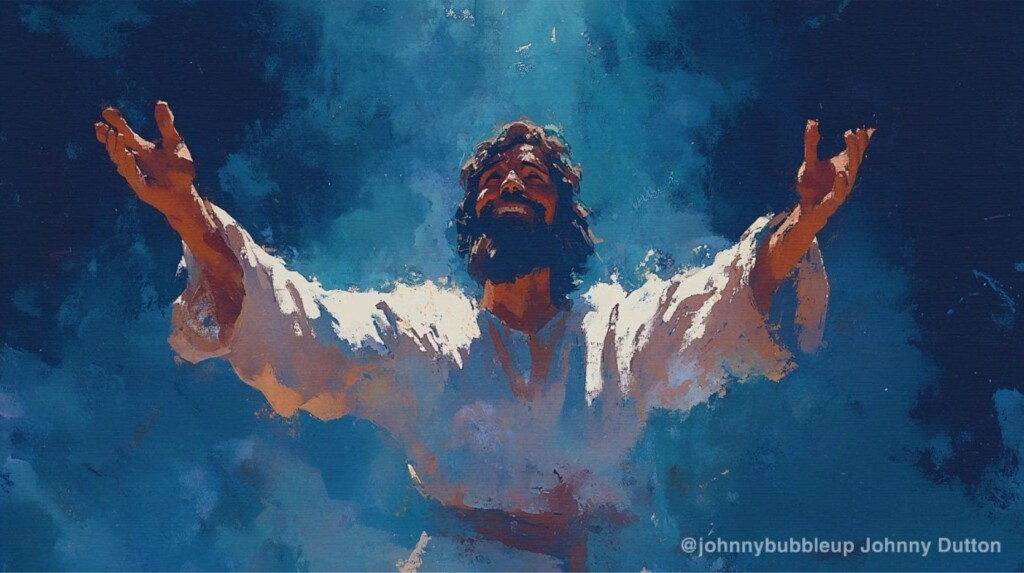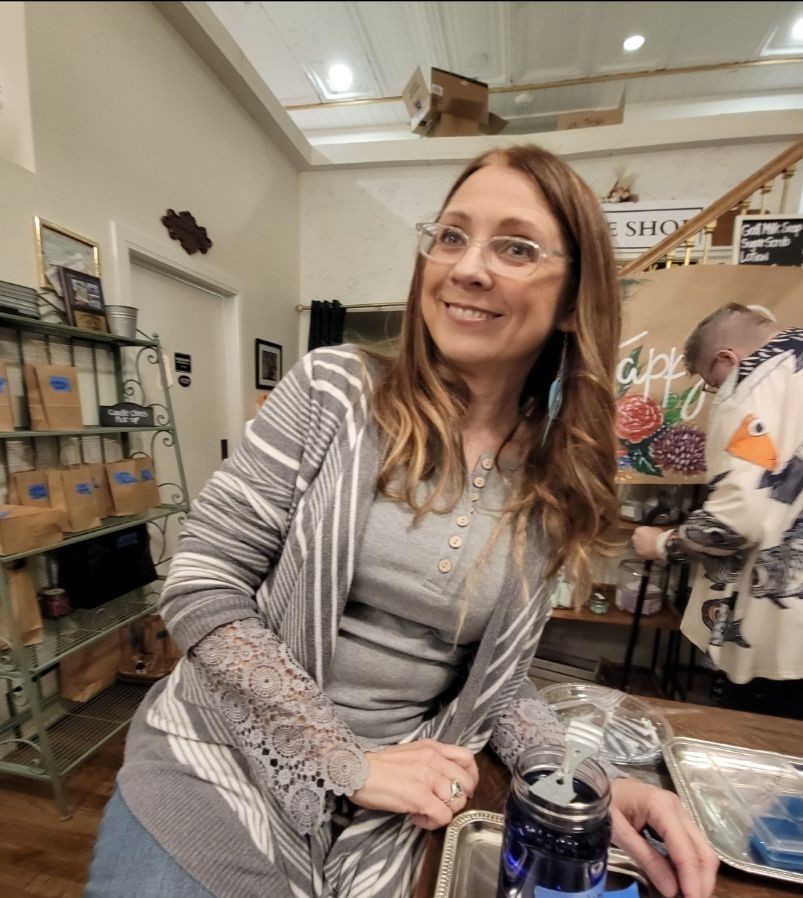Healing is not just an act of divine intervention—it is woven into New Creation reality and the very fabric of Christ’s finished work. In Jesus, the cross was not solely the forgiveness of sins but the restoration of humanity’s wholeness. A whole new race was born. In Christ’s death, burial, and resurrection we do not receive partial measures; but the all-encompassing fulfillment of God’s promise to renew and restore all things (Revelation 21:5).
Healing in the Atonement: Our Covenant of Wholeness
When Isaiah prophesied about the suffering servant, he declared:
“Surely He has borne our griefs and carried our sorrows… by His stripes we are healed.” (Isaiah 53:4-5)
This was not merely spiritual healing; Matthew explicitly ties it to physical restoration when Jesus healed the sick:
“He Himself took our infirmities and bore our sicknesses.” (Matthew 8:17)
The early church understood Christ’s redemptive work as a holistic salvation—one that encompassed both body and soul. Athanasius, in On the Incarnation, emphasized that Christ took on our humanity fully so that in Him, we might be made whole:
“The Word took a body capable of death so that He might turn corruption into incorruption.” (On the Incarnation, 21)
To be “saved” (Greek: sozo) means to be made whole, fully restored to our original design. We are His body and Christ did not come simply to forgive sins but to undo the entire curse of the Fall—this included sickness, decay, and death itself (Romans 8:21-23).
Gregory of Nyssa wrote that Christ’s work was “the undoing of death by death itself,” and this extends to all the consequences of the Fall (The Great Catechism, 32). It is good news! Jesus did not merely give temporary relief to a few; He demonstrated that the reign of sickness was coming to an end. Every healing in His earthly ministry was a foretaste of the New Creation, where:
“The last enemy that will be destroyed is death.” (1 Corinthians 15:26)
In Christ’s resurrection, we see the final proof—He has overcome sickness and death, sealing our completeness. His resurrection life now flows through believers, making healing not just a past event but our present reality.
Metanoia – Shifting From Old to New
Under the Old Covenant, healing was often tied to obedience (Exodus 15:26). Under the New Covenant, healing is a gift of grace. It is not earned, nor is it limited to a select few. Jesus healed multitudes without preconditions—because healing, like salvation, flows from God’s nature of love (Matthew 14:14).
Jesus assumed our body, joining humanity to Him—this matters! Maximus the Confessor taught that Christ restores humanity to its original purpose:
“The Word of God… heals our broken nature by uniting it to Himself.” (Ambigua, 41)
Our healing therefore is not something we strive for, but something we received as part of our restored union with Christ. Just as we trust in the finality of our salvation, our mindsets are being renewed to a trust in the completeness of our healing—the challenge is in the contradictions between what we experience and what is truth. We will examine this.
Jesus, Our Healer—Yesterday, Today, and Forever
What Jesus accomplished in His death burial and resurrection is not just reserved for a moment in history. He is the same “yesterday, today, and forever” (Hebrews 13:8). His finished work has secured our wholeness, and His resurrection has guaranteed the renewal of all things. Healing is part of the total victory of Christ.
Our hope is not in formulas or rituals, but in the reality of a New Covenant where healing is not an uncertain possibility—it is a certainty rooted in the very person of Jesus Christ.

Jesus and Healing in Scriptures: The Testimony of God’s Word
The power of healing is the fulfillment of a divine promise and it is woven throughout Scripture. From Genesis to Revelation, God’s heart for humanity is restoration, and Jesus is the embodiment of that promise. It matters that He came in a body. When we look at healing in the Bible, we see this unbroken thread leading to the finished work of Christ, proving that wholeness is not an afterthought but a central part of God’s redemptive plan.
Healing was always part of God’s covenant with His people. Under the Old Covenant, divine healing was linked to obedience, yet it pointed forward to something greater—the all-encompassing healing of the Messiah.
Exodus 15:26 – “I am the Lord who heals you.” (Yahweh-Rapha, the Lord our Healer)
Psalm 103:2-3 – “Bless the Lord, O my soul… who forgives all your iniquities, who heals all your diseases.”
The prophets foretold that the Messiah would not only be our forgiveness but also healing, as seen in Isaiah’s prophecy:
Isaiah 53:4-5 – “Surely He has borne our griefs and carried our sorrows… by His stripes we are healed.”
Let’s look at the meaning of “by His stripes we are healed” in the Hebrew. It is the word H7495 (רָפָא, rapha): To heal, make healthful.
This same passage, quoted later in the New Testament, shows that healing is not a separate work from salvation—it is all part of the same redemption. As Origen taught:
“The Savior, by taking upon Himself our infirmities, has removed them from us.” (Contra Celsum, 1.66)
The Scripture and Healing Promises
Jesus did not merely preach about healing—He lived it. Everywhere He went, He healed the sick, demonstrating that the Kingdom of God was truly at hand. His miracles were signs that He was the fulfillment of prophecy, unveiling the heart of God is complete restoration.
Matthew 4:23 – “Jesus went throughout all Galilee… healing every disease and every affliction among the people.”
Matthew 8:16-17 – “He cast out the spirits with a word and healed all who were sick, that it might be fulfilled which was spoken by Isaiah the prophet, saying: ‘He Himself took our infirmities and bore our sicknesses.’”
Jesus never refused healing to those who came to Him. He never made it conditional on us, or performance—He healed out of His deep compassion and grace. Gregory of Nyssa captured this reality beautifully:
“He heals our sickness, not by treating the symptoms, but by restoring our very nature.” (The Life of Moses, 2.23)
After Jesus’ resurrection, healing did not cease—it continued through His disciples as part of the New Covenant reality. The same Spirit that raised Christ from the dead dwelled in them, empowering them to walk in the same power.
Acts 3:6, 16 – Peter said, “In the name of Jesus Christ of Nazareth, rise up and walk.” Later, he explained, “His name, through faith in His name, has made this man strong.”
James 5:14-15 – “The prayer of faith will save the sick, and the Lord will raise him up.”
Maximus the Confessor understood this as part of our divine union and total participation in Christ’s victory:
“Christ has joined humanity to Himself, and in that union, we are restored, body and soul.” (Ambigua, 41)
The New Creation: Ultimate Fulfillment
When Christ rose from the dead, He established a New Creation. Christ’s resurrection is our guarantee that the power of all sickness, suffering, and death is eradicated.
Romans 8:11 – “If the Spirit of Him who raised Jesus from the dead dwells in you, He who raised Christ will also give life to your mortal bodies.”
George MacDonald captured this truth poetically:
“The Son of God suffered unto death, not that we might not suffer, but that our suffering might be like His—transformed into glory.” (Unspoken Sermons)
From the Old Testament promises to Jesus’ ministry, the apostolic miracles, and the New Creation, healing is an undeniable theme throughout Scripture. It is part of salvation. The Bible does not speak about healing as a temporary gift for a select few, but as part of our eternal victory in Christ Jesus. We stand on the firm foundation of His Word, knowing that Jesus is still our healer today.

Jesus and Healing the Sick: God’s Compassion
When Jesus walked the earth, healing was a defining aspect of His ministry. Everywhere He went, He healed the sick, restored the broken, and demonstrated the tangible love of God. His healings were not just very tangible signs of divine power; but revelations of the Father’s heart—it is the natural outflow of God’s restorative grace.
Jesus declared His purpose clearly:
Luke 4:18-19 – “The Spirit of the Lord is upon Me, because He has anointed Me to preach the gospel to the poor… to heal the brokenhearted, to proclaim liberty to the captives and recovery of sight to the blind.”
His mission was holistic—He came to restore the whole person, body, soul, and spirit. Not put off for the sweet by and by but for the here and now. Healing was never secondary in His ministry; it was a direct expression of the salvation He came to bring.
Matthew 9:35 – “Jesus went about all the cities and villages, teaching in their synagogues, preaching the gospel of the kingdom, and healing every sickness and every disease among the people.”
Gregory of Nyssa understood this connection between healing and salvation:
“He who healed our infirmities took our nature upon Himself, that He might renew it in all its fullness.” (The Great Catechism, 25)
Jesus did not simply proclaim the kingdom of God is here—He demonstrated it. Every single physical healing, casting out of demons, death resurrection was a sign that the dominion of sickness and death was being overthrown.
Jesus Never Turned Away the Sick
In religion, you will sometimes hear messages that hint that God does not heal everyone. This is a lie being dismantled in the day we live in. One of the most remarkable things about Jesus’ is that He never denied healing to anyone. He healed individuals, multitudes, and even those who were considered unworthy by the elite religious and society at large.
Matthew 8:2-3 – A leper came and worshiped Him, saying, “Lord, if You are willing, You can make me clean.” Jesus stretched out His hand and touched him, saying, “I am willing; be cleansed.”
Jesus’ response reveals God’s heart—He is willing. This is the heart of God!!
Matthew 14:14 – “And when Jesus went out, He saw a great multitude; and He was moved with compassion for them, and healed their sick.”
Athanasius emphasized that Christ’s healing ministry was not just about physical restoration, but about renewing human nature itself:
“The Word became flesh, not only to redeem, but to restore humanity to its original wholeness.” (On the Incarnation, 54)
Many of Jesus’ healings involved an invitation to faith, but they were never a reward for human effort. Healing was always an act of grace.
Mark 5:34 – “Daughter, your faith has made you well. Go in peace, and be healed of your affliction.”
Jesus was not saying that faith itself had magical power—He was pointing to Himself as the source of all faith. Faith is simply the hand that receives what God freely gives. Yet even when faith seemed absent, Jesus still healed because He was moved with compassion. Think of Lazarus, when He raised Lazarus from the dead, no one had the faith to believe it was possible—yet He did it anyway (John 11:43-44). Our healing is not a transaction; but His loving gift.
Then there were all the miracles. Miracles we see still happening today. Jesus’ miracles were acts of mercy—and acts of declarations that the reign of all sickness and death was being dismantled. Every healing pointed forward to the heart of the Trinity and the ultimate restoration of all things.
Matthew 12:28 – “If I cast out demons by the Spirit of God, surely the kingdom of God has come upon you.”
Maximus the Confessor saw Christ’s healings as a sign of the cosmic reconciliation He was bringing:
“In Christ, all things are being made new—He heals not only bodies, but the very fabric of creation itself.” (Ambigua, 7)
While we may not always see healing instantly, we look not after what is seen in the natural but Christ convinces us of His goodness, that salvation is a finished work and we now live in the reality that sickness is a defeated enemy. The resurrection of Christ is the final proof that healing is our eternal inheritance and truth.
Jesus’ compassion did not end when He ascended. He is still manifesting healing and His life flows through His body—the Church. We stand in confident trust that we are not just healed but can live in divine health. We stand in faith, knowing that the fullness of our healing is already secured in the finished work of Christ.

Blood of Jesus and Healing: The Ultimate Cure for All Humanity
The healing ministry of Jesus was not just about removing sickness from our bodies—He foreshadowed a far greater reality for all of us. Every healing pointed mankind to the cross, where Jesus would deal with the root of all brokenness: sin, death, and corruption; once and for all. It is in the blood of Christ that our healing finds its ultimate foundation. Through His sacrificial death, He didn’t offer us individual acts of healing—He poured out a new creation reality of restoring all of humanity as the Last Adam restoring new life in His blood. Securing eternal wholeness for all creation.
Speaks a Better Word
Under the Old Covenant, under the law, sacrifices were required for atonement, but this was never something God desired and it could never fully remove sin or its effects. The sacrifices served to only remind us we needed something far greater and more permanent moving the cosmos forward to incarnation of Jesus Christ, whose blood spoke a greater word and would accomplish what no ritualistic animal sacrifice ever could.
Hebrews 9:12 – “Not with the blood of goats and calves, but with His own blood He entered the Most Holy Place once for all, having obtained eternal redemption.”
Healing is included in the atonement itself. Isaiah prophesied this, and the New Testament confirmed it:
Isaiah 53:5 – “By His stripes we are healed.”
1 Peter 2:24 – “Who Himself bore our sins in His own body on the tree… by whose stripes you were healed.”
It was Origen who believed that Christ’s blood was key to undoing all the effects of the fall:
“The blood of Christ does not only cleanse sin—it restores what was lost in Adam, healing both soul and body.” (Commentary on Matthew, 16.8)
The Finished Work of Christ
When Jesus declared, “It is finished” (John 19:30), He was proclaiming the complete victory over all that entered the world through Adam’s fall—sickness, suffering, and death included. This is so key to understand, the last Adam didn’t just “fix a problem”, He eradicated and healed it, raising up a new creation in wholeness and triumph.
His blood reconciled all things, securing spiritual and physical restoration:
Colossians 1:20 – “And by Him to reconcile all things to Himself, by Him, whether things on earth or things in heaven, having made peace through the blood of His cross.”
Athanasius understood this truth deeply, teaching that Christ’s work was not just about saving souls, but about restoring the entire human condition:
“The Word took on flesh so that He might heal all flesh.” (On the Incarnation, 44)
Jesus and the Eucharist: His Body, His Blood
One of the most tangible and powerful ways we partake in Christ’s healing is through the Lord’s Supper. When Jesus spoke of His communion, He unveiled the precedence of our union. He declared His broken body was given for our wholeness:
Matthew 26:26-28 – “Take, eat; this is My body… This is My blood of the new covenant, which is shed for many for the remission of sins.”
Maximus the Confessor saw the Eucharist as a participation in Christ’s life-giving power:
“Through His body and blood, Christ unites us to His incorruptibility, transforming what is mortal into what is divine.” (Mystagogia, 24)
When we partake of communion, we are not just remembering a past event—we are receiving the very life of Christ into our being, including His power to heal.
Trusting In A Present Reality
Many struggle with doubt when they don’t experience healing in their bodies, questioning God’s goodness and wondering if they have been overlooked. Religion often amplifies this by offering man-made doctrines and formulas—steps to follow, conditions to meet—only for these methods to fail, leaving us disillusioned, frustrated, and even angry.
But in these moments, Holy Spirit calls us back to truth. He urges us to silence the noise of doubt, to cast down every vain imagination—just as Paul exhorted—and to reclaim our focus. Our eyes are not meant to be fixed on human reasoning, fleeting experiences, or religious formulas. They are meant to be fixed on Jesus Christ alone, the One who has already accomplished all things for us.
Healing is not a formula to master; it is a finished work to receive. Set aside the striving, the methods, and the fads, and return to the unshakable truth—Christ has already raised us up into wholeness.
By the precious blood of Jesus, healing is not a possibility but a secured reality in God’s kingdom—available now. Even when healing seems delayed, we anchor ourselves in the infallible truth that His blood has sealed our full restoration. We walk by faith, not by sight, knowing that even if we don’t yet see the fullness, we will!
George MacDonald captured this beautifully:
“In the heart of the suffering Christ is the health of the world, and in His wounds, our wholeness is found.” (Unspoken Sermons)
Healing is our inheritance—it is a finished reality in Christ. The blood of Jesus guarantees that sickness does not have the final say. We stand, not in uncertainty, but in the unshakable truth that His work is complete.
Because of His blood, we can boldly declare—not only are we forgiven (Ephesians 1:7), but we are redeemed (Colossians 1:14), we are healed (1 Peter 2:24), and we are whole (1 Thessalonians 5:23)—right here, right now.
His blood has secured eternal restoration, silencing every doubt, breaking every chain, and declaring once and for all: wholeness is ours. His blood speaks a better word—a word that cannot be undone, a word that echoes through eternity—and that word is WHOLENESS.
Recommended GAN TV Resources
- I Am Healed by Gan TV Co-Founder, Dr. Robin Smit Purchase Book -> HERE
- Healing Is His Love Language by Gan TV host of WOW LIFE, Kirby De Lanerolle Watch -> HERE
- The Healer Within by Gan TV host, Malcolm Smith, Unconditional Love Ministries. Click Below to Watch
Sources for this article:
Patristic and Theological Sources:
- Athanasius – On the Incarnation
- Gregory of Nyssa – The Great Catechism, The Life of Moses
- Maximus the Confessor – Ambigua, Mystagogia
- Origen – Contra Celsum, Commentary on Matthew
- George MacDonald – Unspoken Sermons
Scriptural References:
- Healing in Prophecy & Atonement: Isaiah 53:4-5, 1 Peter 2:24
- Jesus’ Healing Ministry: Matthew 4:23, Matthew 8:2-3, Matthew 8:16-17, Matthew 9:35, Matthew 12:28, Matthew 14:14, Mark 5:34, Luke 4:18-19, John 11:43-44
- Healing in the Church: Acts 3:6-16, James 5:14-15
- Healing as a Finished Work: Hebrews 9:12, John 19:30, Colossians 1:20, Romans 8:11, 1 Corinthians 11:29-30
- Eternal Restoration: 1 Corinthians 15:26, Revelation 21:4-5, Revelation 22:2
- Healing & Covenant: Exodus 15:26, Psalm 103:2-3, Matthew 26:26-28














